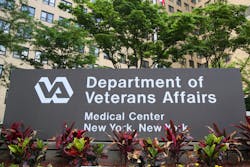VA Reimagining Approach to EHR Modernization
After a strategic review of its electronic health record modernization program, executives of the Veteran Health Administration (VHA) are putting in place new cost controls and governance processes.
VA’s first implementation of Cerner Millennium occurred on Oct. 24, 2020, at the Mann-Grandstaff VA Medical Center in Spokane Wash. Reports from the Government Accountability Office (GAO) and Office of the Inspector General (OIG) reflected a range of issues with the deployment.
At the direction of Secretary Denis McDonough, as Acting Deputy Secretary, Carolyn Clancy, M.D., gathered a diverse group of senior subject matter experts and leaders from across the enterprise for a 12-week review of the program. In her written testimony delivered to a July 21 hearing of the House Committee on Veterans’ Affairs’ Subcommittee on Technology Modernization, Clancy described the issues they identified and some of the recommended changes. Here is a summary version of what she told the subcommittee.
• Patient Safety: The VHA is leading an effort to ensure there is a common definition of what constitutes a “patient safety issue,” reflective of industry best practices. An interdisciplinary team is working to ensure any open issues are resolved.
• Productivity: VA identified a significant decrease in productivity post- implementation, compounded by the effects of the Covid-19 pandemic. VA teams are actively working to ensure Veteran access to care, improve processes, and make necessary technical fixes. In addition to impacts on operational efficiency, revenue cycle operations were disrupted by the Cerner deployment. While missing functionality has now been deployed to support VA-specific billing needs, issues persist. Currently, many parts of the claims and payments process require manual entry.
• Governance and Management: Moving forward, VA is effectuating a unified, enterprise-wide governance that incorporates the perspectives of key clinical, technical, acquisition, and finance leaders, among others. Responsibility for management of the project, including oversight of appropriated funds, will remain with the Deputy Secretary. An interdisciplinary team of key leaders, to include the Under Secretary for Health, Chief Information Officer, Chief Acquisition Officer, and others will contribute joint functional expertise to the program.
• Cost: The lifecycle cost estimates previously developed addressed the funding request from Congress and the three primary areas of the EHR: the contract with Cerner, the infrastructure readiness requirements above base IT funding, and the program management office. A complete lifecycle cost estimate for the entirety of the project was not created to account for other requirements outside these primary areas. VHA is now undertaking a lifecycle cost estimate to clearly identify total costs associated with the project, regardless of whether sources of funding currently exist within current programs. This includes all infrastructure costs related to the project, as well as those attributed to VHA and VA’s Office of Information and Technology based on the recent OIG findings. Additionally, the VHA is implementing the aforementioned new cost controls and governance processes.
• Schedule: The size, scope, and complexity of the EHR project requires an integrated master schedule which aligns the multiple functional areas of the project with other major enterprise initiatives. Further, the initial deployment schedule was based on the premise of deployment regionally for both DoD and VA; at this time, deployments are no longer synchronized. “Not only are we developing a new project integrated master schedule using best practices, but we are also establishing our first ever VA Integrated Program Strategy linking our other major acquisition and digital transformation efforts with EHR modernization to more efficiently deploy our resources while mitigating risk,” Clancy wrote.
On July 1, 2021, VA sent a letter to Congress informing members of the appropriations committees of a change in the future deployment schedule. Going forward, changes in schedule will be informed by a new enterprise-wide Current State Readiness Assessment.
• Performance: Key Performance Indicators for the project were not effectively created, maintained, or managed. As part of the strategic review, VA clarified and re-established contractual and functional metrics. VA is also establishing a Cooperative Research and Development Agreement with Cerner to leverage best practices, foster innovation, and create share value while minimizing costs.
• Patient Portal: Upon implementation last October, the patient portal experience was fragmented for Veterans in Spokane. VA’s Veterans Experience Office has just completed a study of Veteran experience and preferences to inform decisions on the future of the portal and will also take into consideration legal and contractual obligations.
• Testing: Clinical and interdisciplinary workflows were not tested prior to “go-live” in a manner that effectively reflected a real-world environment. VA is working to establish an enterprise testing environment where interdisciplinary teams can rehearse and model the effects of workflow design and changes before future go-lives with Cerner Millennium.
• Data: Technology infrastructure was established to migrate and syndicate data between VistA and Millennium. However, gaps remain in the VHA’s ability to govern and manage data between the two EHRs and with DOD to ensure seamless, Veteran and employee-centric information sharing, and provision of managed, trusted data. Under VA’s Data Governance Council, data managers, engineers, scientists, and informaticists across the enterprise are working to strengthen enterprise data management practices and tooling. VA is working to align with DOD more closely and will continue to work to ensure the mission of seamless transition of Servicemembers to Veterans status is accomplished.
• Change Management & Training: Change management and training were not effective in ensuring interdisciplinary employees both understood and had effective support in completing the key functions of their roles within the new system. To this end, VA teams are redesigning role-based change management and training strategy. This new effort is critical to ensuring end user adoption of what can be perceived as “disruptive” technology, she said.
On the basis of these initial findings, VA is reimagining its approach to Electronic Health Record Modernization. “We are taking swift and decisive action to incorporate the management rigor and enterprise jointness required for this program to deliver on its intended purpose: seamless excellence in VA care for Veterans,” Clancy wrote.


